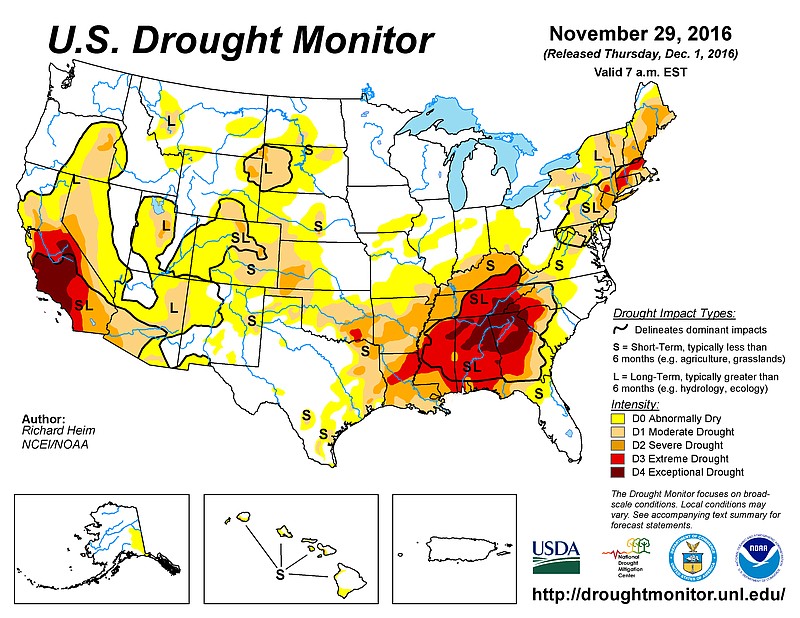A healthy river or lake is like a Rolex watch - there are dozens of settings and pieces that must all be in alignment to work right, but once it's working, it's difficult to interrupt. Water level, water temperature, oxygenation, sediment levels, salinity and pH levels are just a few of the closely interconnected cogs in the machine. Even one being out of whack can ruin the order of the whole watch, er, lake.
Eastern Tennessee through Northwest Alabama has been suffering from a D2, or "severe," drought since mid-2016 - which can disrupt even the most well-oiled machines, so to speak. Still, initial signs from TVA indicate that local fish populations won't be severely harmed.
"When you have a drought, it brings on stress in the fish, which can lead to an increase in disease and parasites," says TVA fisheries biologist Kurt Lakin. "But the fact is the TVA system of dams and reservoirs is very dynamic and flexible. We can handle these short-term, intense drought periods."
Lakin says the local drought conditions in 2016, deemed D3, were similar to what Tennessee experienced in 2007 - the second-driest year on record for the state, according to the National Oceanic and Atmospheric Administration. But local waterways such as the Tennessee Blueway, Lake Nickajack and Lake Chickamauga sustained minimal damage that year, he says.
As a result, fishing in those waters continued as normal throughout that period, and fishing conditions this summer are expected to be similar.
However, Matt Kulp, a fishery biologist with Great Smoky Mountains National Park, expects trout streams there to take a big hit this season.
While wildfires can have a similar damaging effect on waterways in the burn zone, Kulp says initial soil and sediment tests indicate that the fires will have a minimal effect in comparison to the sustained drought conditions.
"Droughts can lower the densities of trout in lower-elevation streams. When temperatures go up due to low stream flow, the fish don't take as much food in," Kulp says.
According to Kulp, typical adult trout mortality in the park is around 50 percent each year. However, in a severe drought year, an additional 30 to 50 percent of the remaining fish could also perish.
This doesn't affect all species equally, though. Kulp says native brook trout manage drought conditions much better than the invasive rainbow trout. Fly fishermen casting their lines in the park this summer could expect to find brook trout farther downstream where the bigger rainbow trout would typically bully them out.
"It's typically not too noticeable to fishermen out there the first year," Kulp says. "Non-game fish like minnows tend to have their densities hold or improve during drought years."
The big concern, at least for now, is that the 2016 drought conditions could become a new norm. If that's the case, Kulp says, he and his colleagues will have to work to prevent soil erosion, low water flow and sediment buildup as a result of the lack of rain.
Likewise, one of TVA's biggest conerns is how the drought might cause terrestrial plants to dry out because of the lack of sufficient rainfall, Lakin says. Some streams that aren't actively managed by TVA could take a hit due to less surface and shoreline flora, which would increase water temperature. Higher water temperatures can lead to agitated fish that can't find sufficient food, potentially dropping their numbers.
However, Lakin isn't overly concerned right now.
"People are definitely going to be able to fish this spring and summer just like they would normally," he says. "We have the modeling equipment to know where water needs to go. Besides, Mother Nature is incredibly adept at recovery. Our waters will survive."
